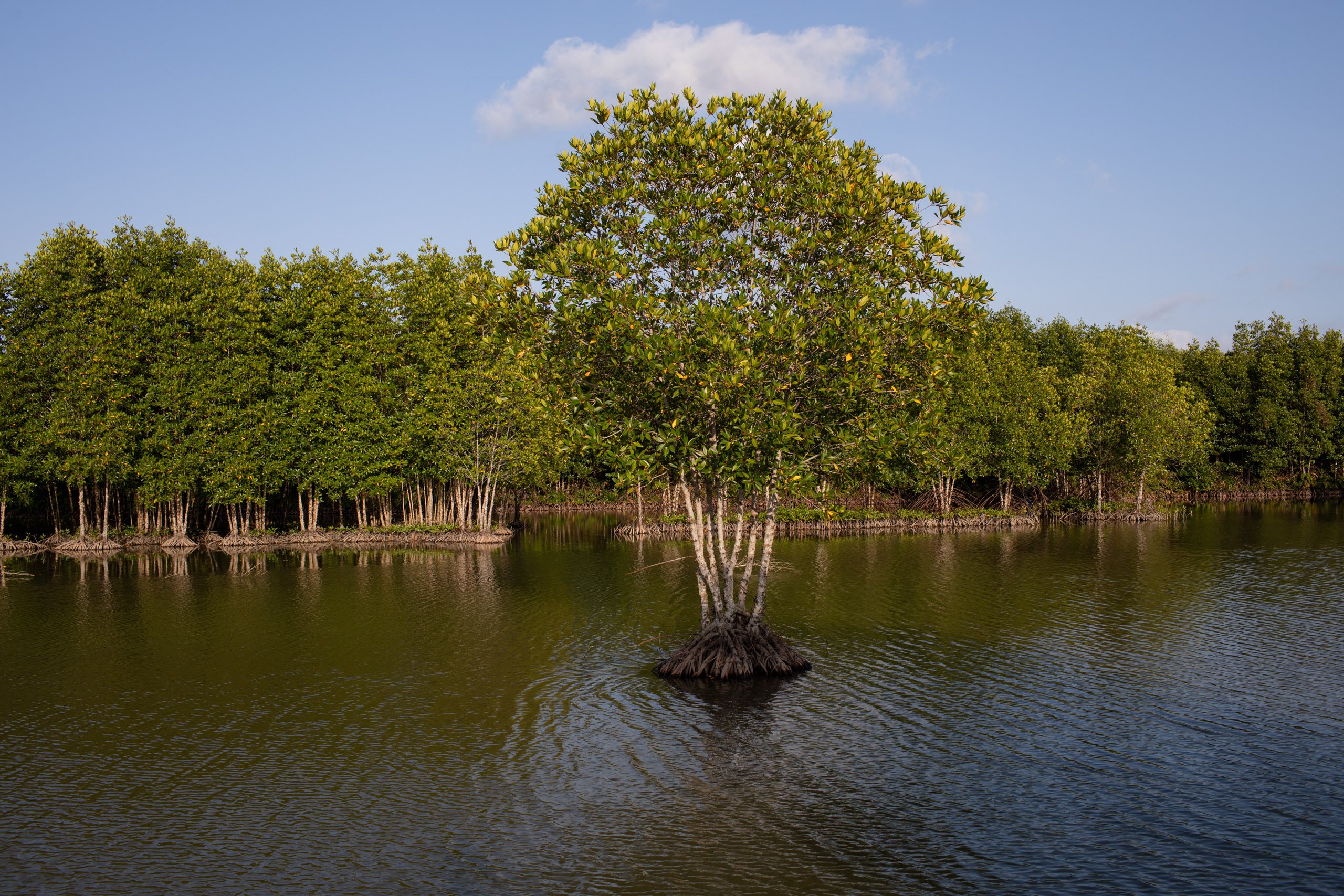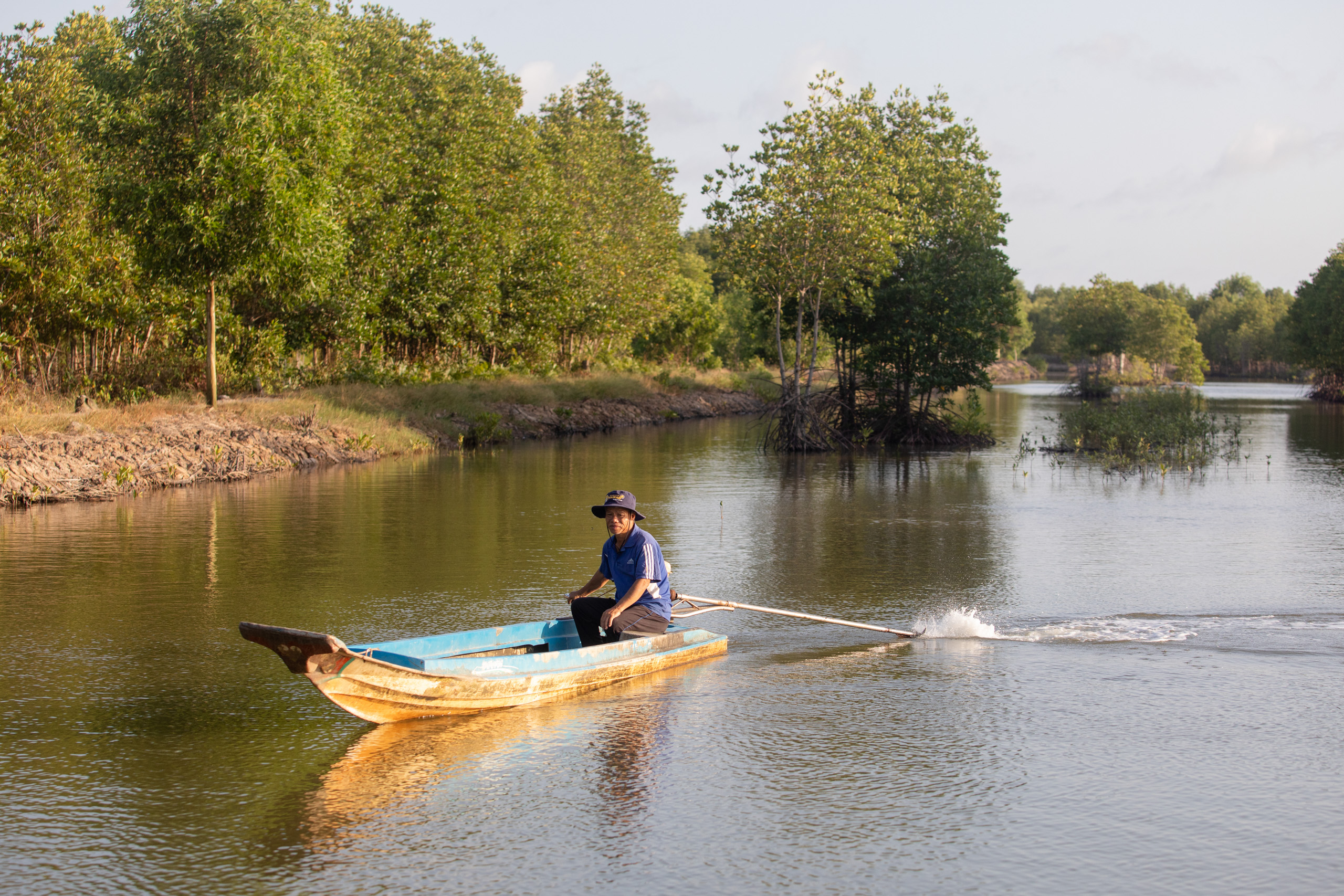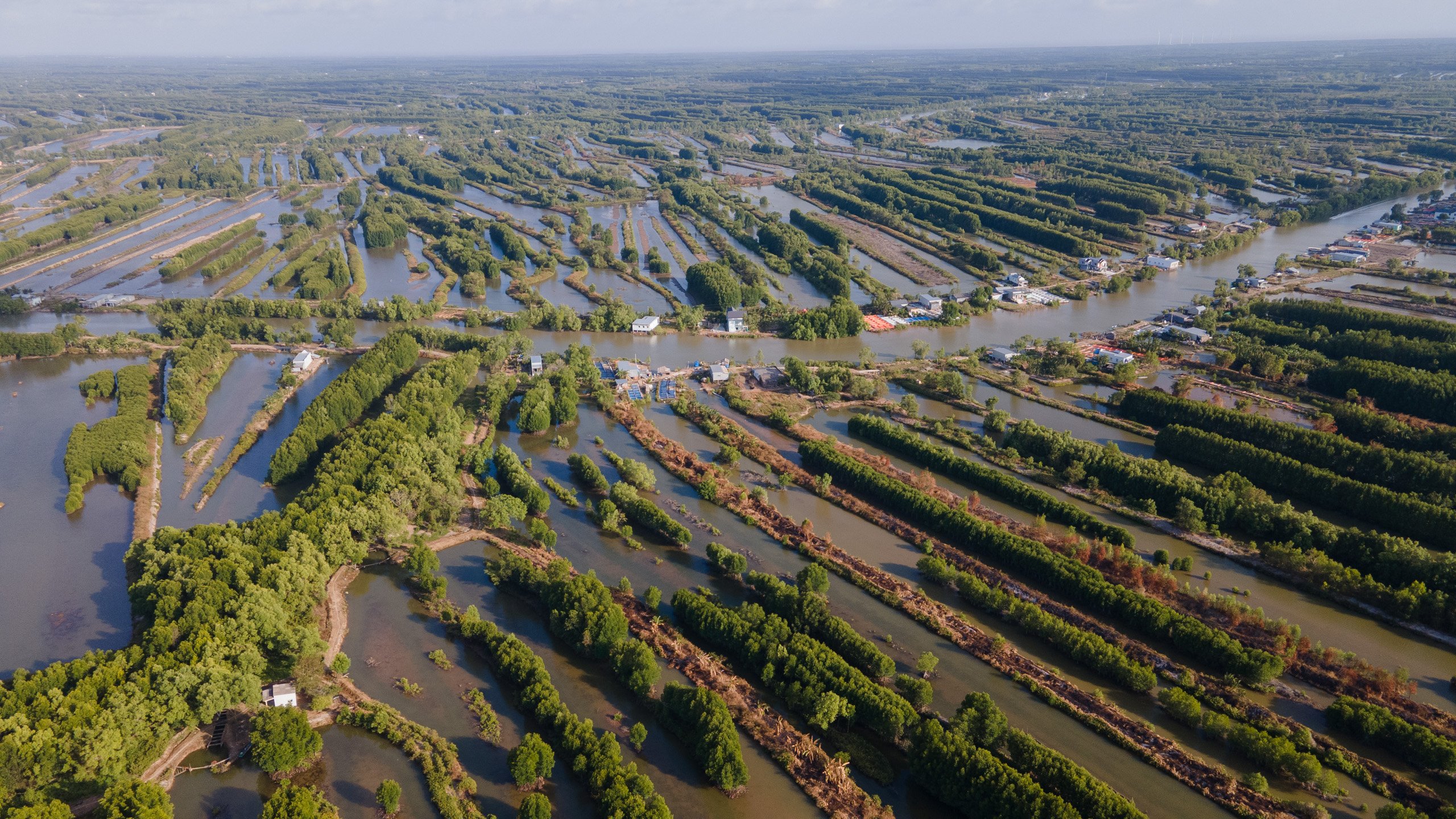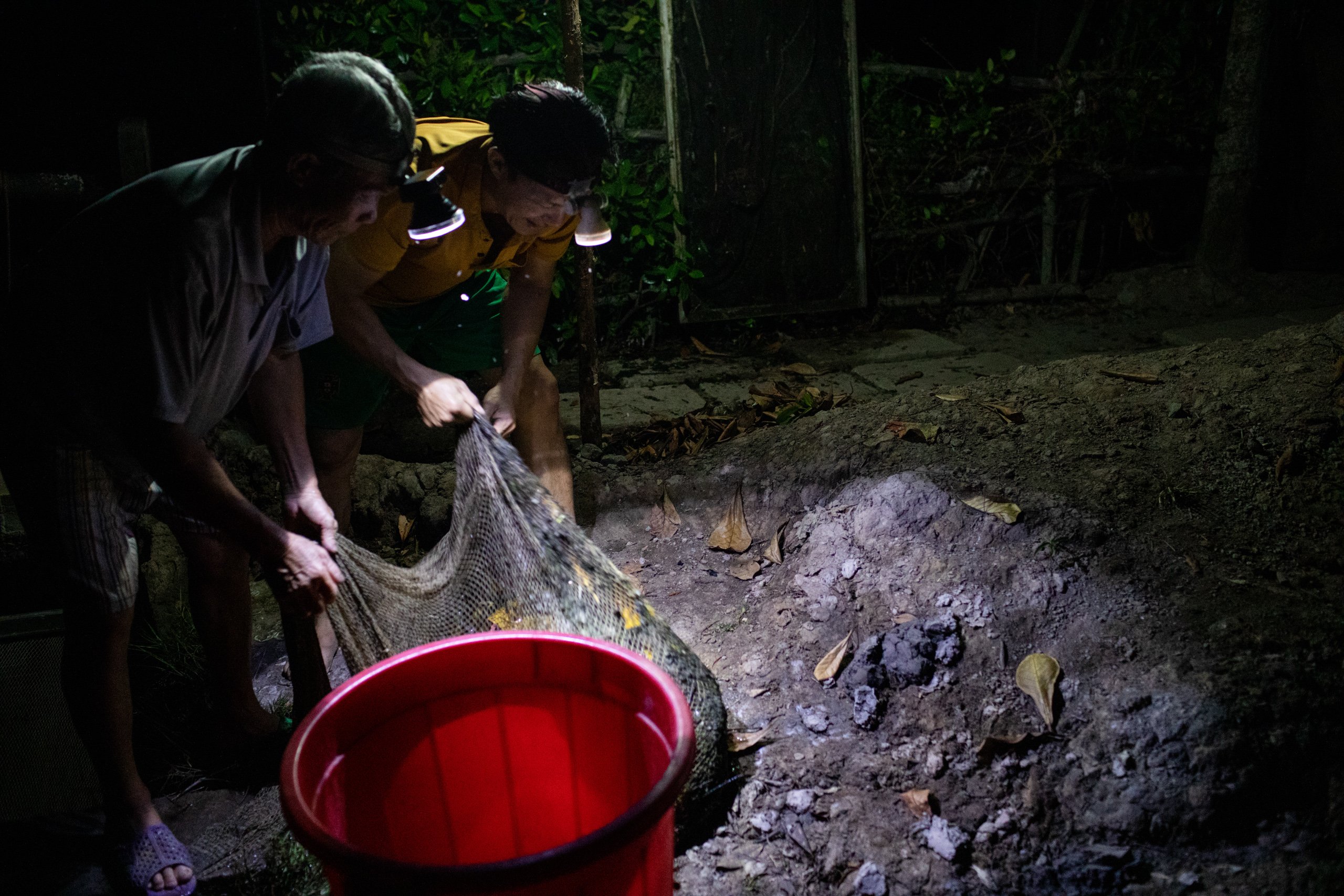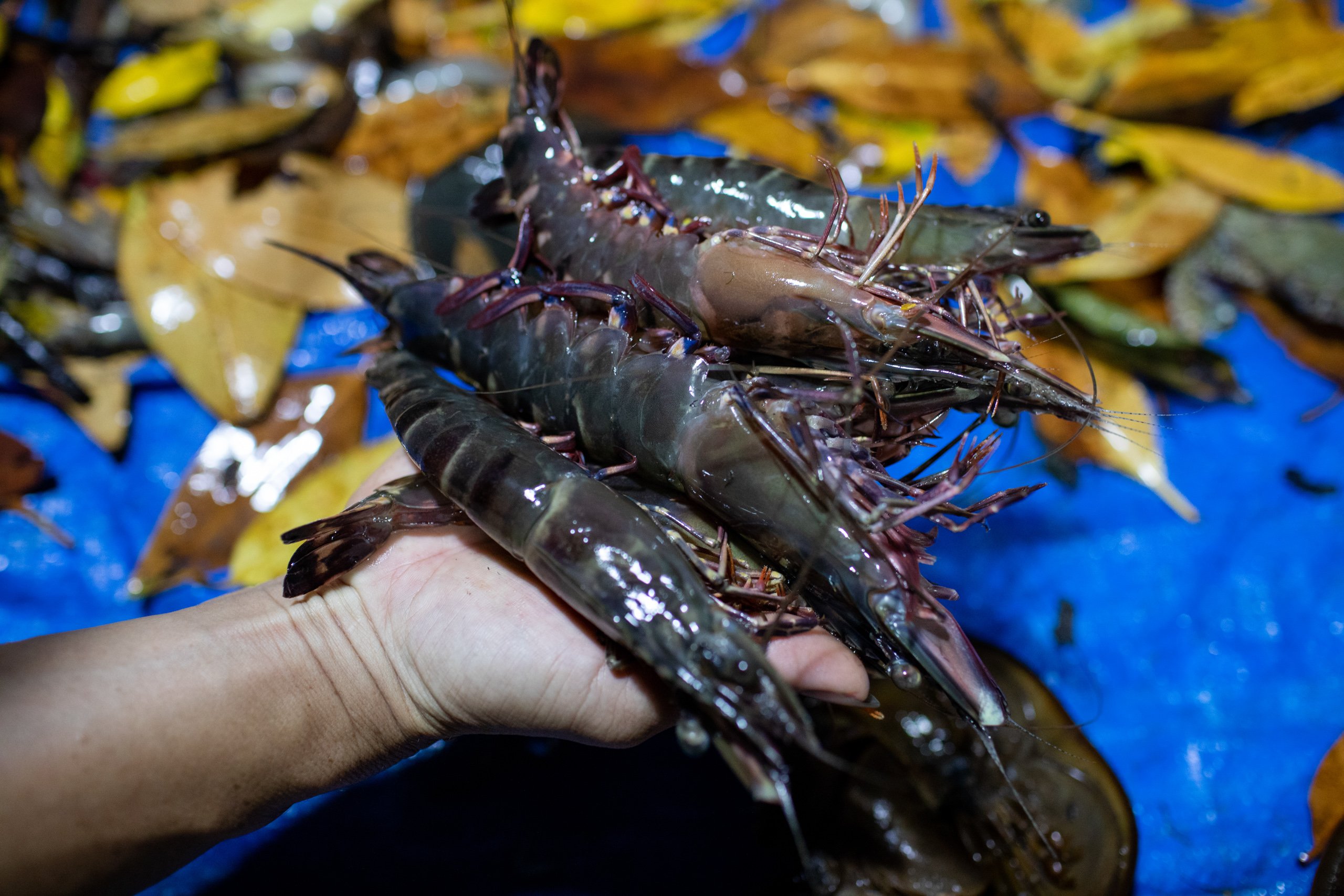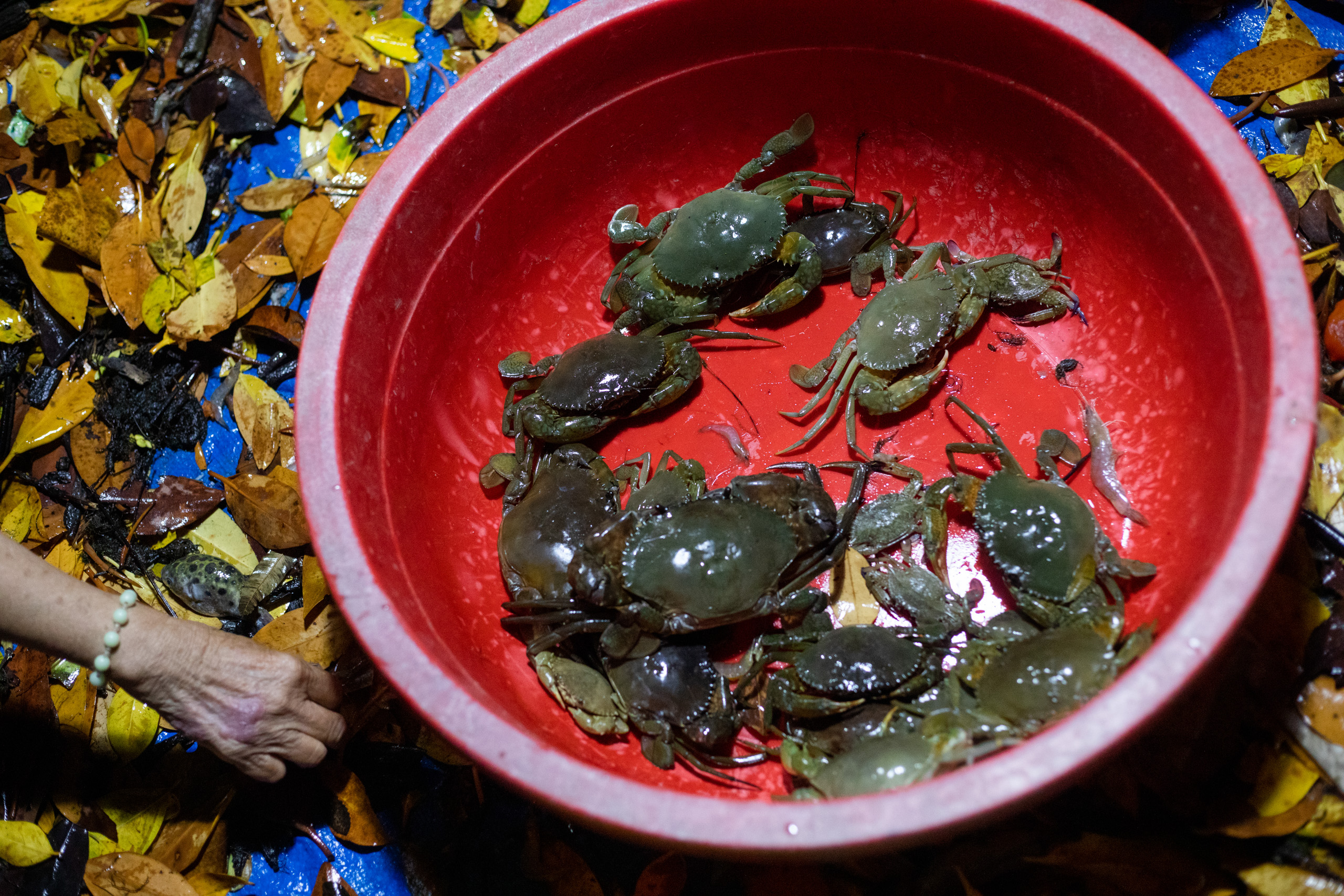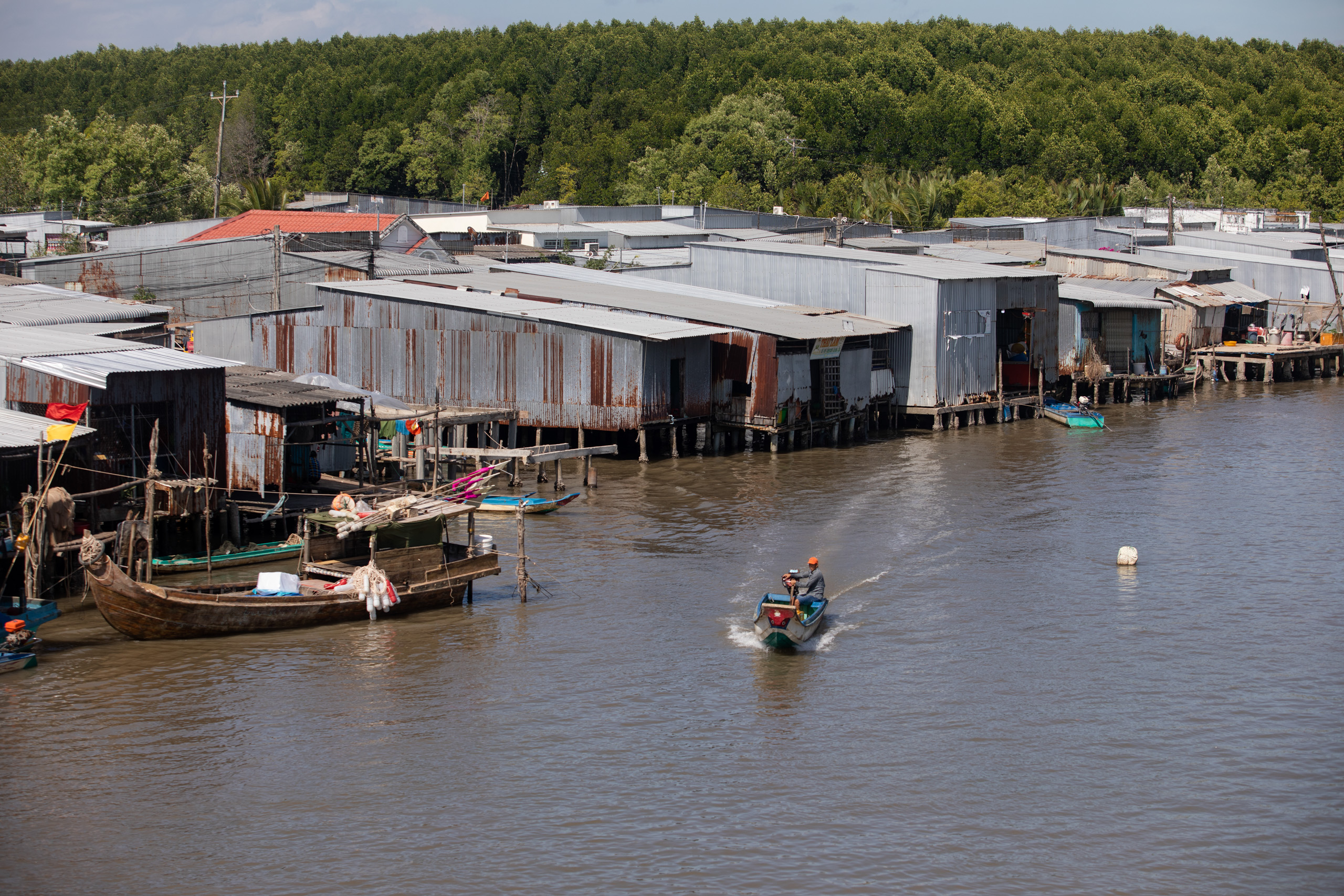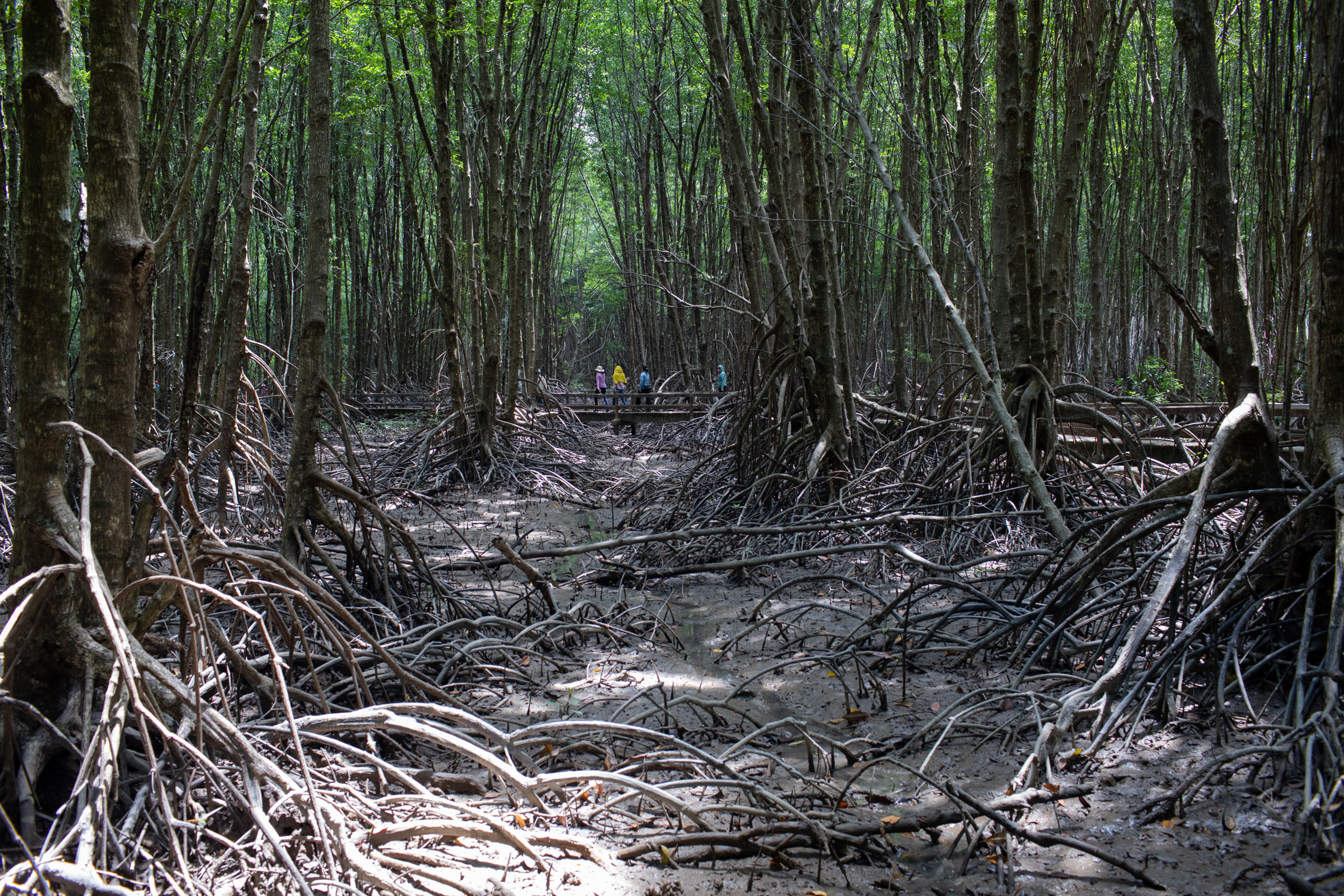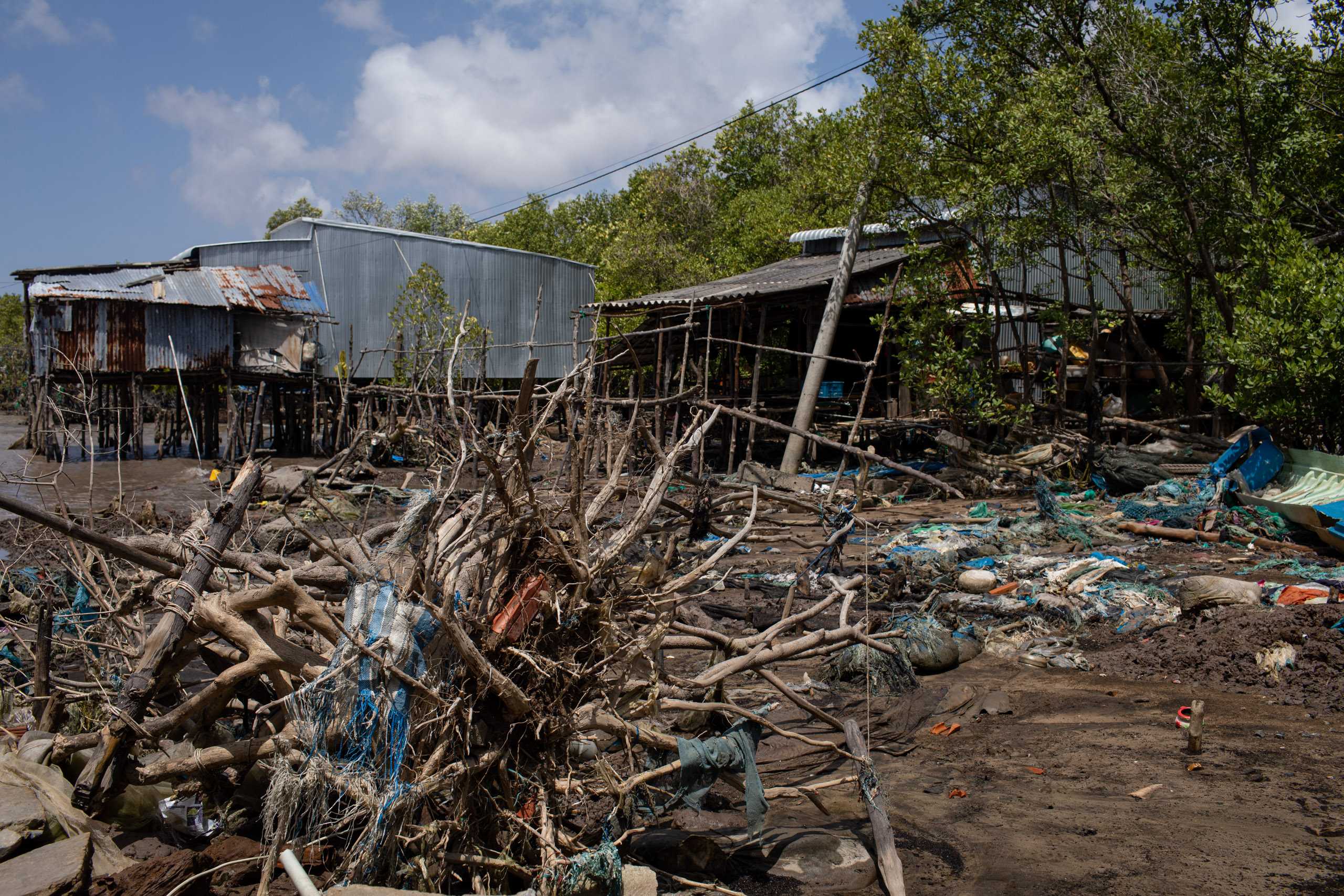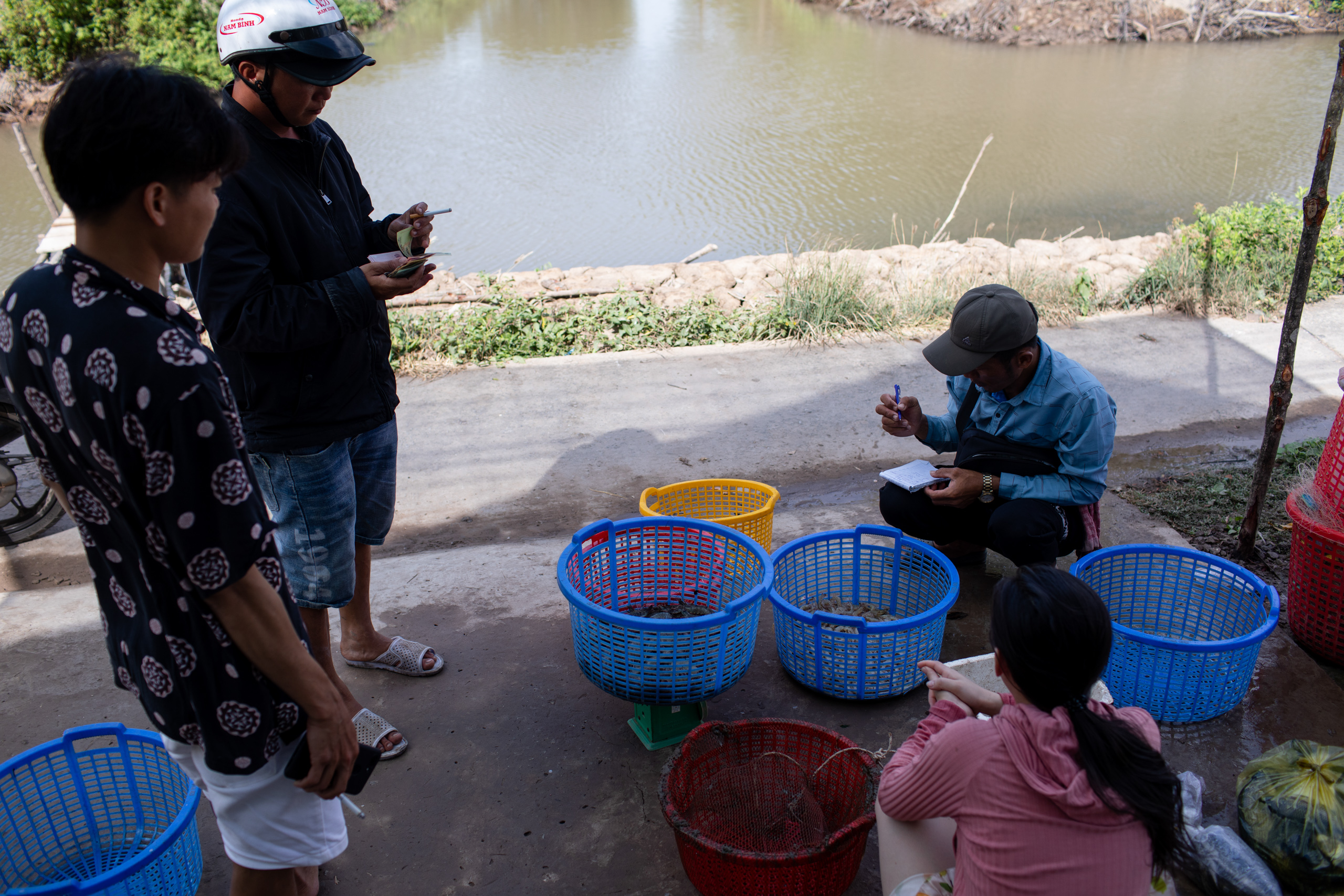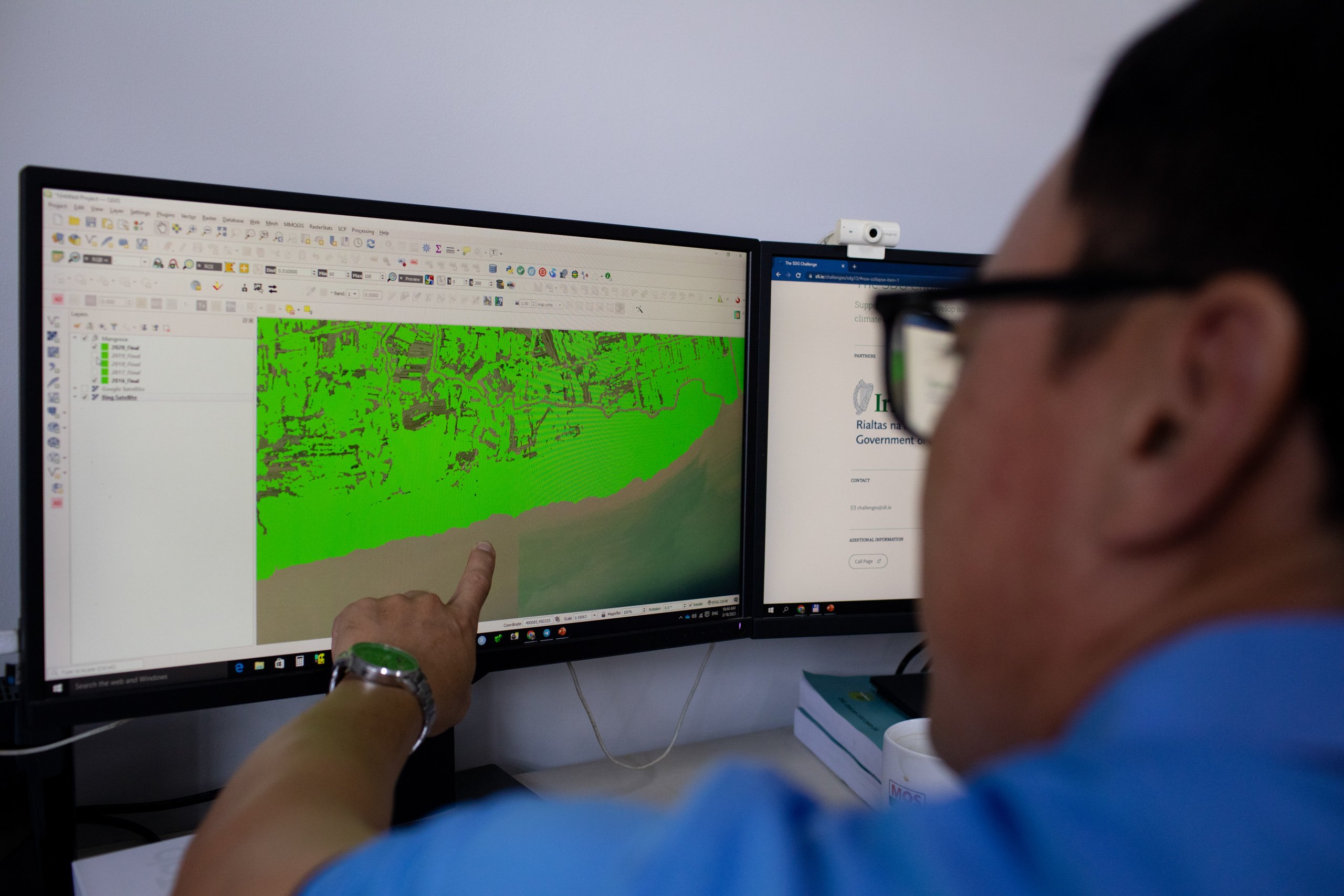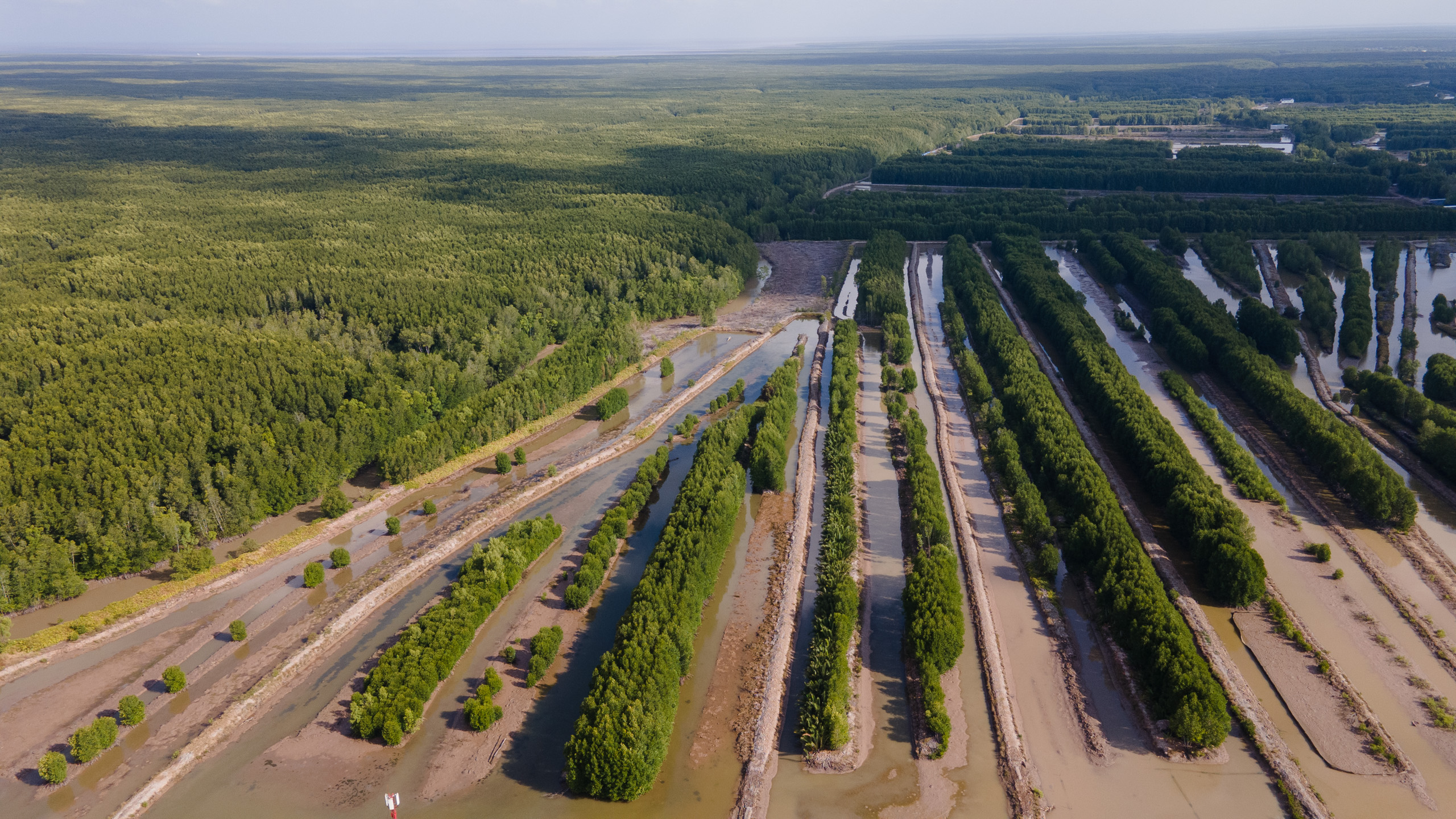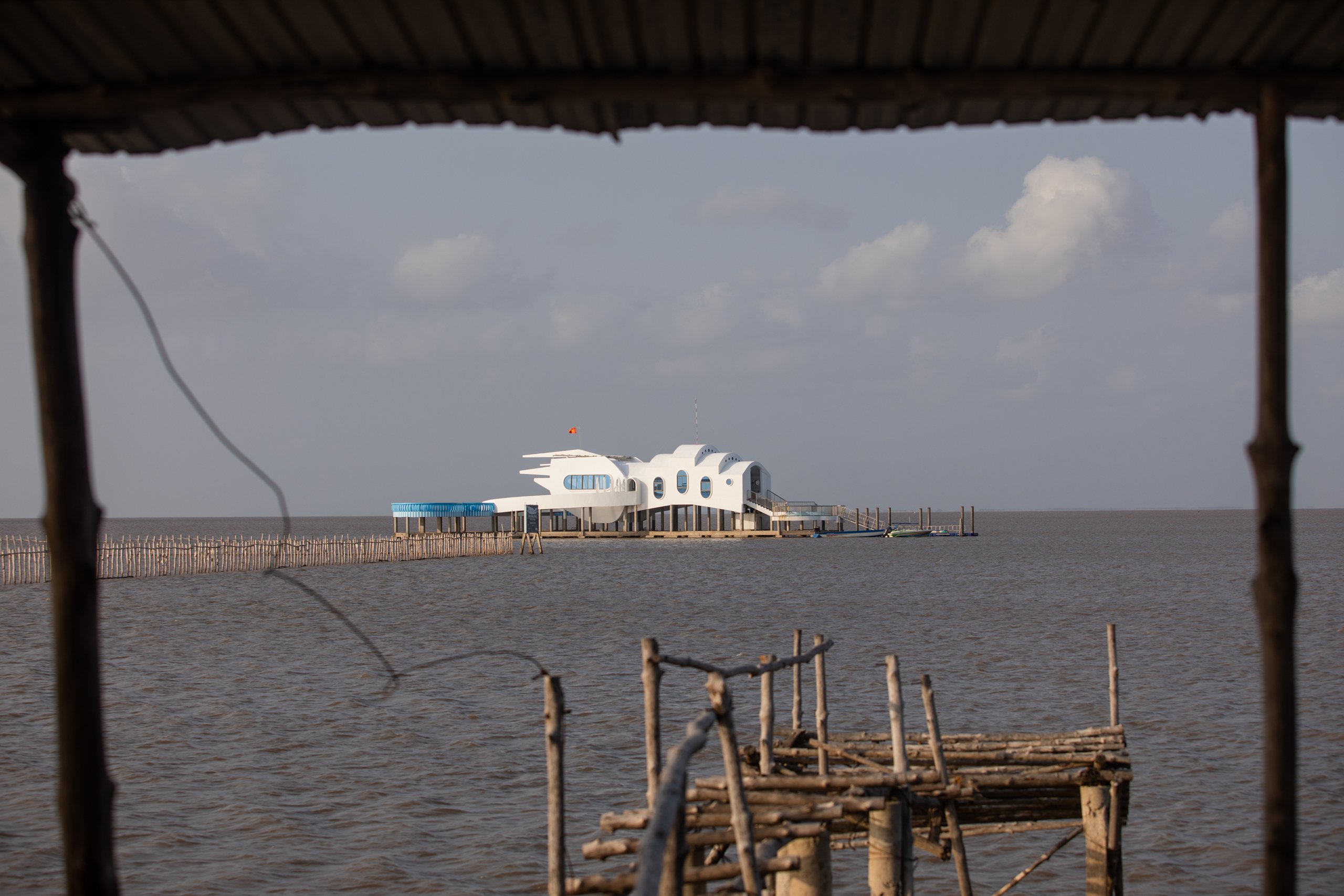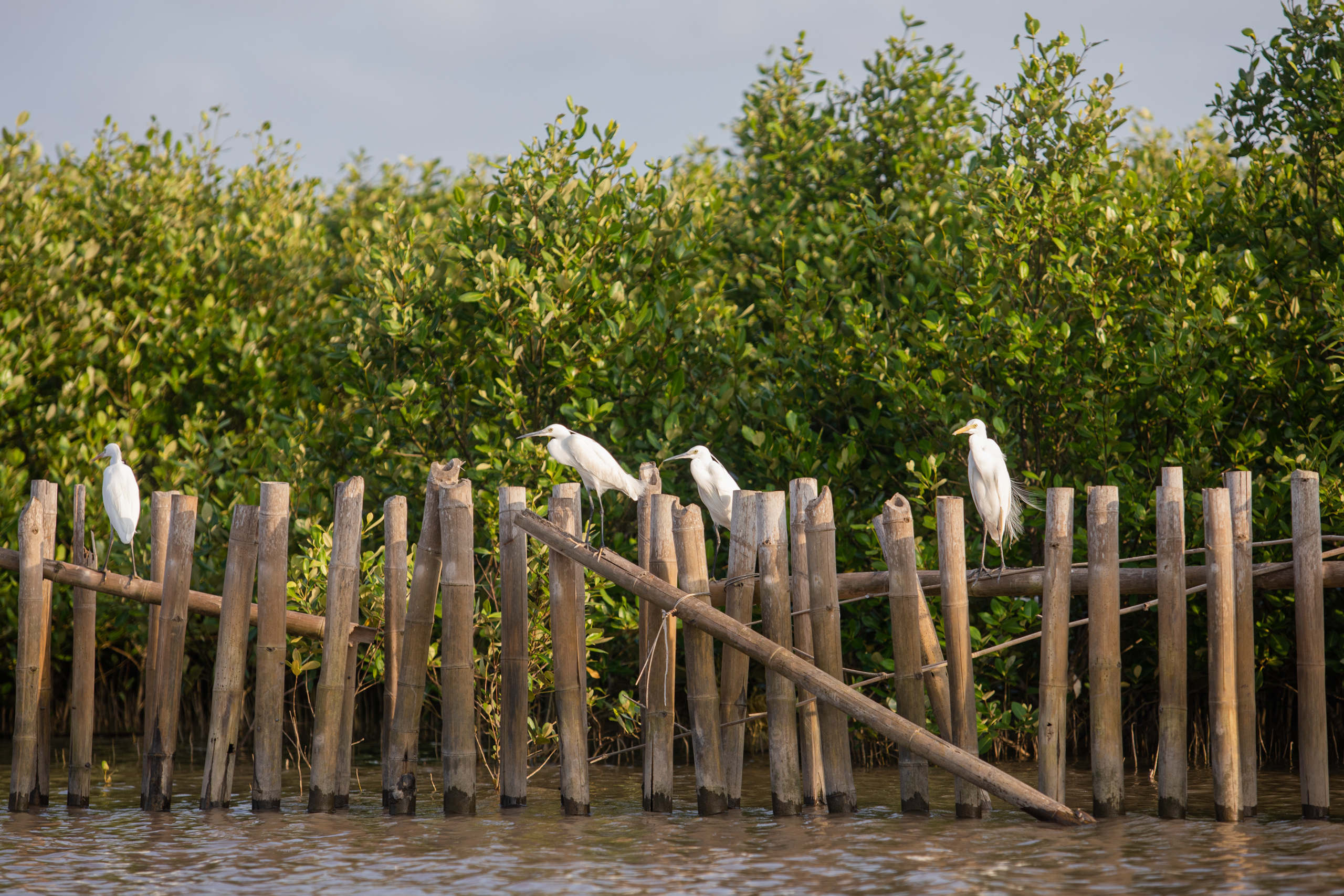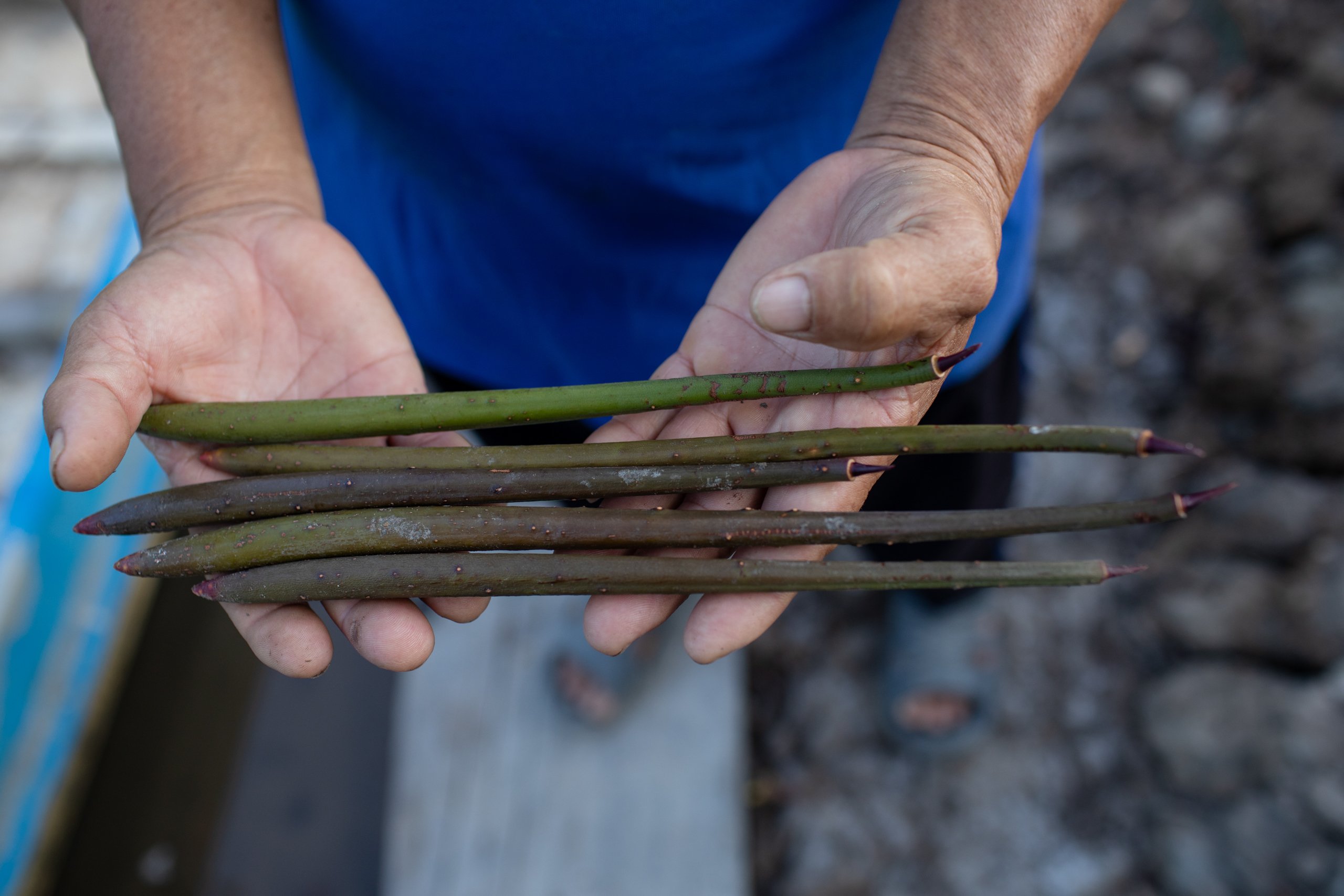Leaving space for mangroves among the shrimp farms in the Vietnam Mekong Delta has been a win-win for aquaculture and the environment, but farmers say the economic benefits of the model are slowing
Under a canopy of mangroves, Tran Van Thac’s black tiger shrimps scuttle about the clean waters of their pond, devouring any organic matter they encounter. For years, ‘integrated shrimp-mangrove’ ponds like Thac’s in the southern Vietnamese province of Ca Mau, on the Mekong Delta, have been praised for providing organic produce and stable yields at a low cost, while allowing mangroves to be preserved.
But this year, the harvest from Thac’s 10-hectare pond is down. The 49-year-old farmer blames recent strange weather, which he says he hasn’t experienced in his 30 years of shrimp farming. Unexpected rains during the December-May dry season have diluted the brackish water the shrimp need, and colder than usual temperatures have made it hard for them to survive.
“They have to hibernate in the mud for weeks,” he says. “[They] hardly eat anything while suffocating in the freshwater. Most die before reaching maturity.”
Thac is signed up to an organic programme with a major seafood producer, under which farmers are not allowed to add fertiliser, antibiotics, growth promoters or other chemicals to the water. “Our shrimp, crabs, fish and our mangroves rely 100% on the environment,” he says. “And when it changes, it messes up everything and our hands are tied.”
Sunny and alluvium-rich, Ca Mau province is home to Vietnam’s largest area of mangrove forest, with 69,000 hectares of the climate change-combatting vegetation. Ca Mau is also the shrimp capital of the country, with more than 278,000 hectares of shrimp ponds.
Instead of replacing forests to make way for ponds, integrated shrimp-mangrove farming spares at least half of the area for rhizophora trees – the native tropical mangroves. In turn, the trees provide nutrients, nurseries and breeding grounds for shrimp, crabs, and fish.
Ordinarily, within three to four months the system yields organic, healthy shrimp. These fetch higher prices than conventionally produced shrimp, at up to USD 13 per kilogram, and are in demand in foreign markets like the European Union. With 23,000 hectares occupied by integrated shrimp-mangrove farming, Thac’s home district of Ngoc Hien is where the system is most widely used.
On paper, it’s a win-win: mangroves are saved, and farmers’ incomes are boosted. The rate of mangrove loss due to aquaculture in the Mekong Delta has fallen, from 2,440 hectares a year between 1973 and 1990 to 1,490 hectares a year between 2010 and 2020.
But a closer look at this mangrove stronghold in the world’s third–largest delta reveals a more complex picture. Despite the benefits of the integrated shrimp-mangrove model, tension remains between the needs of the forest and the aquaculture industry – and this is being aggravated by both climate change and the effects of upstream dams.
‘Mangroves are still underappreciated’
Most of the land of the Mekong Delta owes its existence to mangroves. Their roots trap sediment as the Mekong River pours into the South China Sea, and so layers of silt are deposited in the brackish water. Mangroves also play a crucial role in carbon capture: globally they account for about 3% of all carbon stored by tropical forests.
“It’s a magical tree that can digest salty water and dirty air and thrive,” says Vo Quoc Tuan, a mangrove specialist at Can Tho University. “Mangroves have been and are still being underappreciated, not just by farmers but also the general public and… the government.”
Vietnam has been losing mangroves for hundreds of years, starting in earnest with the thinning of the forests by 19th-century French colonisers. During the Vietnam War, the use of defoliant chemicals destroyed more than 40% of southern Vietnam’s remaining mangroves.
Then, beginning in the 1980s, the government, World Bank and Asian Development Bank encouraged the conversion of mangroves to shrimp ponds as a way to reduce poverty and grow the economy. In parts of the Mekong Delta, the area covered by shrimp ponds increased by 20 times between 1980 and 1993.
Between 1996 and 2010, Southeast Asia lost a greater proportion of its mangroves than anywhere else in the world.
According to government data, as of 2020 Vietnam only had around 238,000 hectares of mangrove cover left. Researchers who analysed satellite images found an even bleaker picture, with only 102,160 hectares remaining.
The picture might yet be worse were it not for efforts, starting in the 1990s and ramping up in the 2010s, to protect and restore Vietnam’s mangroves. Land was allocated for replanting mangroves, and areas such as the core zone of Ca Mau Cape National Park were put under stricter protection.
“Our findings show that the conversion is not happening so much now,” says researcher Vo Quoc Tuan. “If you look at the inland mangroves from the remote sensing, the total area is even expanding – not as fast as it should be – but still good news.” Tuan attributes much of this improvement to integrated shrimp-mangrove systems.
While the efforts of the government and international organisations have reduced the area of forest being converted, mangroves are still being lost. Sea level rise, landslides, pollution and the operations of hydropower dams upstream have all led to mangroves retreating inland. In recent decades, precipitation during the rainy season has become heavier and more frequent, but it has reduced during the dry season. As a result, overall the brackish water of the Mekong Delta has become saltier and less conducive to mangrove seedling survival and growth.
On top of this, farmers are increasingly questioning the benefits of integrated shrimp-mangrove farming.
Growing scepticism of the mangrove-shrimp model
Phan Tien Dzung was one of the first Vietnam farmers to sign up to an initiative which promoted the coexistence of shrimp farming and mangroves.
Arriving in Ca Mau from northern Vietnam amid the ‘shrimp fever’ of the late 1980s, he started by chopping down mangroves and digging out ponds on 8 hectares of land.
“Forest land was allotted to people willing to make a living out of it or sold at a cheap price,” the 64-year-old recalls. “For shrimp, you just led the river water into the ponds, which were already full of larvae, and waited three months to harvest lots of them. Everything was so abundant and easy to get back then.”
High shrimp yields in those first few years helped him to build a comfortable life and a spacious house in Vien An commune, in the zone surrounding the strictly protected Ca Mau Cape National Park. Then, he says, “in 1994 forestry officials came to the village and asked us to spare half of our pond area to grow mangroves”.
Starting in 1995, mangrove coverage ratios began to be enforced under official forest protection policies in Vietnam: to be granted land in mangrove areas, farmers had to sign contracts with local forestry management boards or state-owned forestry companies.
The ratio of mangrove-to-pond coverage currently varies between provinces and the type of forest land being allotted. Researchers have said optimum results are achieved when mangroves cover roughly 60% of a plot of land, but generally policies stipulate a minimum mangrove coverage of 50%. Seafood companies and NGO certification programmes require a similar ratio for shrimps to be labelled sustainable.
One such programme is an organic shrimp farming certification project called Mangroves and Markets (MAM), rolled out 2014 in Ca Mau by the International Union for Conservation of Nature (IUCN) and SNV Netherlands Development Organisation. This requires farms to have mangrove cover of 50%-60%, in return promising that they will be paid more for their produce.
The mixed shrimp-mangrove systems were promoted as a ‘win-win’: the mangroves would help to purify the water, creating an environment in which the shrimp could thrive, and in turn provide stable incomes for farmers. Farmers could also cut down the mangroves when fully grown, to sell their timber as an additional source of income.
For all the policy’s touted benefits, “people were not so fond of it”, Dzung says, but “had to go along if we wanted to keep making a living here”.
Dzung says that mangrove trees shedding their leaves into his ponds alters their condition. Mangrove leaves contain tannic acid, which can change the water’s pH levels. When the water conditions change due to this or after heavy rainfall, the shrimp die, he says. “It’s not like they all belly up at once in the ponds. Not so dramatic. They just vanish.”
There have also been recent price fluctuations in the shrimp market, which Dzung says means that “traders paid us [organic farmers] sometimes as low as the industrial farms”.
And unlike shrimp, whose fast growth allows his family to cash in every three months, mangroves take at least 10 years to reach the ideal 12-cm diameter to harvest for timber – adding to his pessimism about the model.
“I understand the reasons for the trees to be here, protecting us from the storms and all kinds of climate turbulence,” the veteran farmer adds. “But people need to eat, they need their next meal secured.”
His sentiments echo a 2021 study which found that while local communities are aware of the benefits mangroves bring, the integrated shrimp-mangrove systems still stand on shaky ground in terms of support from farmers. Back at Vo Quoc Tuan’s lab in Can Tho University, the researcher sums up the situation. “Very few [farms] at the moment actually reach 50% [mangrove coverage],” he says. “Looking from above, you can see the dark green streaks of mangroves are very small. Meaning many shrimp farms have a tree ratio of only 30-40%, even lower sometimes.”
This lower ratio of mangrove coverage promises higher shrimp yields in the short term, but means a reduction in the ecosystem services the trees provide, in the long term reducing the farms’ productivity.
Money and community engagement needed
Vietnam, which is among the most vulnerable countries in the world to extreme weather, has committed under the Paris Agreement on climate change to restore and expand its mangroves. However, its Nationally Determined Contribution from 2022 – its national climate pledge under the agreement – notes that Vietnam only achieved about 30% of the target it was supposed to have reached in 2020 to protect, restore and plant mangroves and coastal forests.
“It’s a bumpy road, but there’s always hope,” says Iris van Duren, a Dutch expert on wetland ecology who has been working alongside Vo Quoc Tuan to raise awareness of the importance of mangroves and the integrated farming system for the Mekong Delta.
While there’s little Vietnam can do on its own to stop coastal erosion, given the impacts of dams and sand mining upstream on the Mekong, van Duren says integrated mangrove-shrimp aquaculture can be improved.
First, van Duren points out, farmers will cut down mangroves if they can make profit from doing so. Research has found that rather than regulators taking punitive actions, offering farmers financial incentives to look after the mangroves on their land could be a more successful approach.
“Certification for truly sustainably produced shrimp could be a good start,” van Duren says. One problem certification schemes have run into is that travelling to farms to evaluate their mangrove coverage is expensive, labour-intensive and can lead to disputes with farmers.
Tuan and van Duren are working on a system that instead uses remote sensing technology and aerial photography. This can be used by companies and certification projects to accurately assess which farms in Vietnam meet their criteria.
Above all, however, Tuan and his team expect the data they gather to provide policymakers with “reliable and frequent information”, allowing more precise decisions when it comes to selecting sites and allocating funding for mangrove-restoration projects.
“You can alert them, for instance, if conservation areas are actually used for other purposes, or where dykes need to be built to protect people still living there, and where to leave [sites] for nature to do its job,” van Duren says.
The growing market for forest carbon credits may help to drive this. As a pioneer of the UN’s REDD+ programme and the first country in Asia to initiate a nationwide scheme of payments for forest environmental services, Vietnam is now developing a domestic carbon market, scheduled to be in operation by 2028.
Tuan says that “[there] is still a long way to go” until such policies and their benefits trickle down from the central government to the Mekong Delta – “like the distance to the moon”. But to reach net zero by 2050, as Vietnam has pledged to do, he says this has to happen.
In all of this, a vital missing ingredient for success is the voices and experiences of local communities. Despite their mixed feelings towards the mangroves in their farms, both Dzung and Thac are keenly aware that the southern tip of the Mekong Delta needs the trees to survive.
“But things need to be improved around here,” says Dzung, suggesting that officials could listen more to farmers’ concerns about poverty and food insecurity, and work alongside them more often.
Thac, meanwhile, is more concerned about the impact of the changing environment on his livelihood. “I heard mangroves help the world tackle climate change, yet we the growers here have already had to taste its impacts,” he says. “We’ve done our job of planting the trees – and can even plant more if they pay us well, but just us alone is not enough.”

